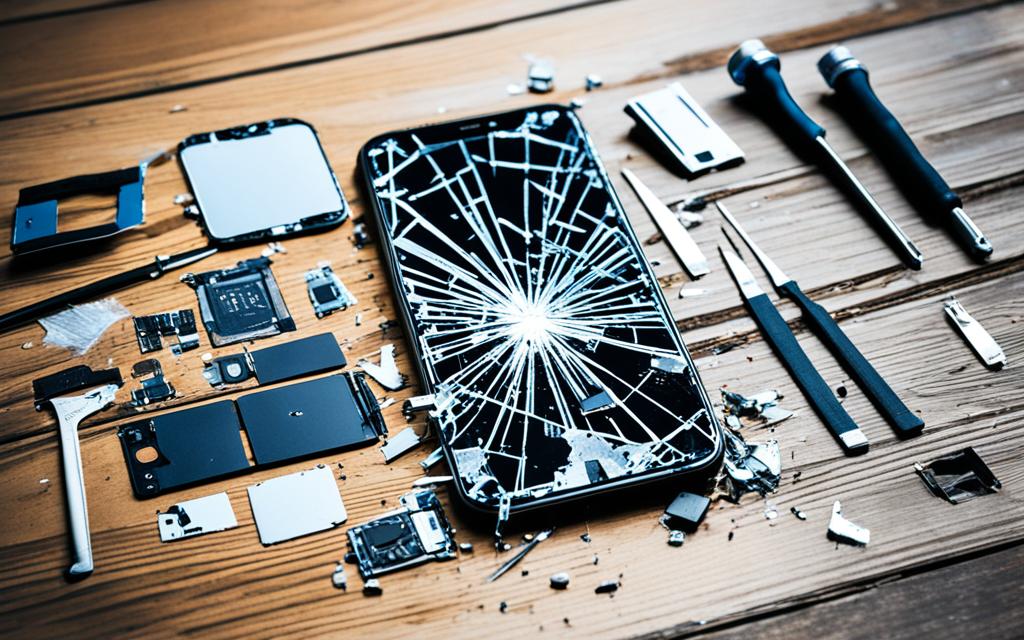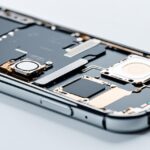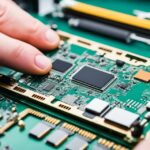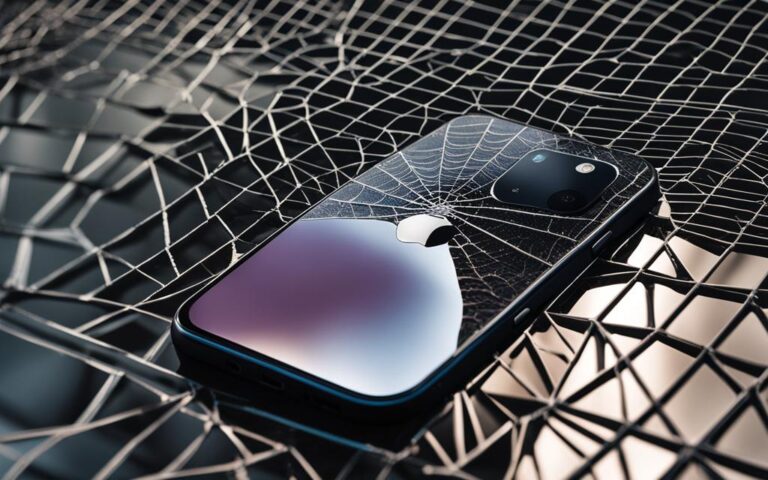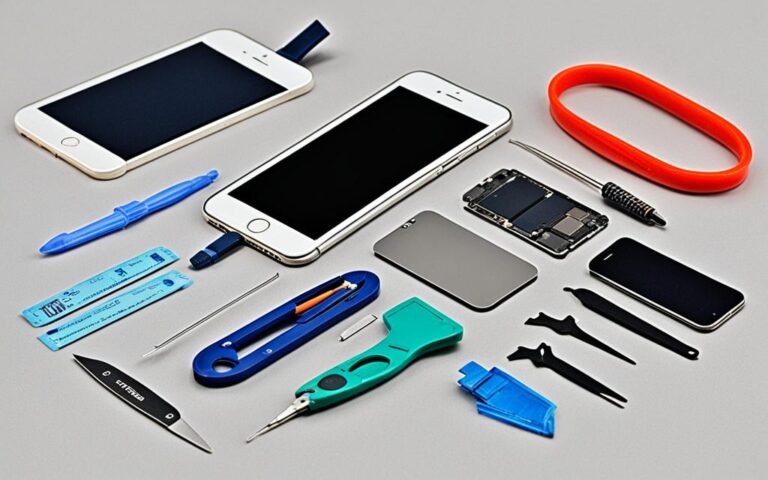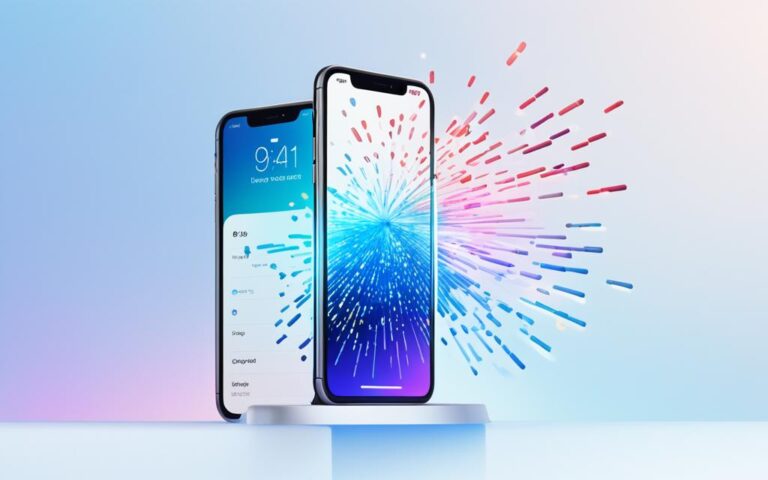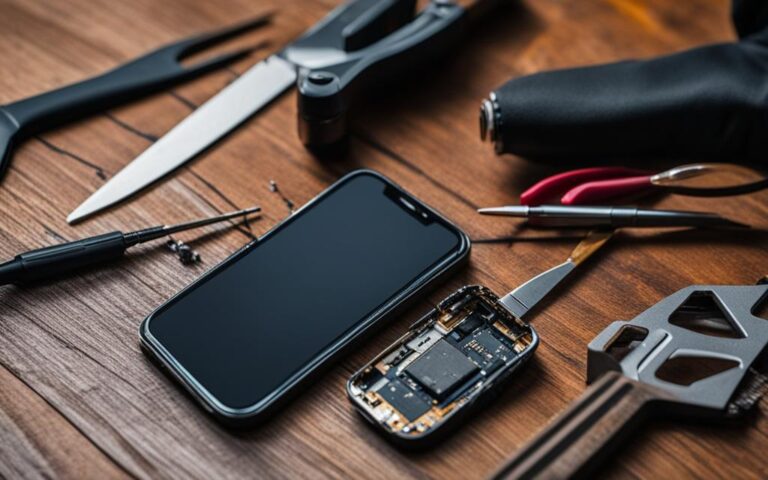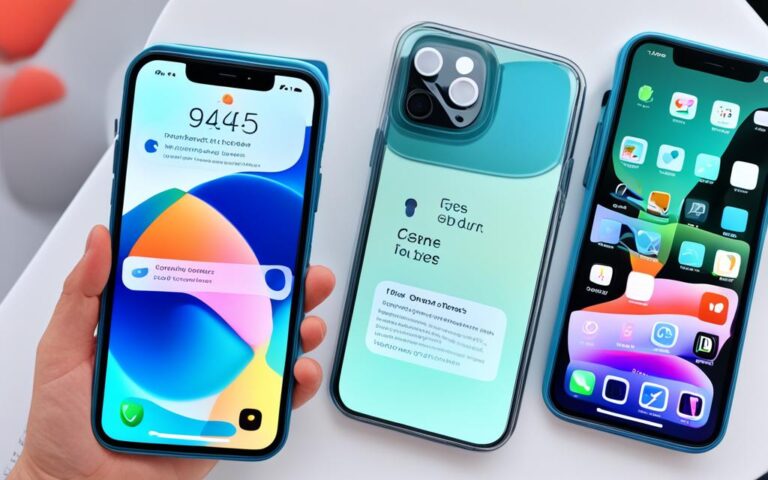The Evolution of iPhone Screen Technology and Repair Techniques
The evolution of iPhone screen repairs has been a fascinating journey since the launch of the first iPhone in 2007. From simple screen replacements to complex motherboard repairs, the servicing industry has had to adapt and evolve rapidly to keep up with technological advancements.
This article explores the key milestones in smartphone servicing, highlighting how the iPhone revolutionized mobile technology and influenced repair and maintenance practices today.
Over the years, the iPhone has gone through significant changes, both in terms of screen technology and repair techniques. From the early LCD displays to the more recent OLED panels, iPhone screens have become more vibrant, immersive, and fragile.
Repair techniques have also evolved, with technicians now equipped with specialized tools and skills to handle intricate repairs. Whether it’s a cracked screen, a faulty touch sensor, or a damaged digitizer, iPhone repair professionals can restore the device to its original functionality.
As iPhone users become more reliant on their devices for both personal and professional tasks, the demand for high-quality screen repairs has increased. People expect quick and reliable solutions to their screen-related issues, ensuring that their iPhones remain in optimal condition.
In the following sections, we will delve into the first iPhone, the rise of the Android ecosystem, the role of software updates, the differences between iOS and Android, the shift towards modular design, and conclude with the future of iPhone screen repairs.
The First iPhone: A Game-Changer in Smartphone Servicing
The launch of the first iPhone in 2007 was a watershed moment in the history of smartphones. It redefined what a mobile device could do and set new standards for smartphone servicing. Before the iPhone, mobile phones were relatively simple and had minimal servicing needs. However, the iPhone introduced a touchscreen interface, internet browsing, and a variety of apps, which significantly increased the complexity of repairs. Authorized Apple service centers became popular due to the iPhone’s closed ecosystem and warranty policies.
With the introduction of the iPhone, smartphone servicing was no longer just about replacing physical buttons or fixing simple software issues. Repair technicians now had to navigate the intricacies of touchscreen technology, ensuring seamless user experiences and addressing hardware malfunctions specific to the device. This shift demanded specialized knowledge and repair techniques to deal with screen replacements, digitizer issues, and the delicate nature of the iPhone’s internal components.
“The launch of the iPhone marked a turning point in the world of smartphone servicing. It propelled the industry into a new era of complexity, requiring technicians to adapt and innovate in order to meet the repair demands of this groundbreaking device.” – Sarah Johnson, Repair Specialist
Authorized Apple service centers quickly emerged as the go-to destination for iPhone owners seeking repairs. These centers were equipped with the knowledge, tools, and genuine parts necessary to maintain the iPhone’s performance and uphold its warranty policies. The closed ecosystem of Apple products meant that third-party repair shops faced challenges in accessing official repair manuals and acquiring genuine parts, further strengthening the position of authorized service centers.
The iPhone’s influence on smartphone servicing extended beyond the device itself. As other manufacturers entered the market with their own touchscreen smartphones, they too incorporated similar repair techniques and standards established by Apple. The first iPhone paved the way for advancements in screen technology, such as the introduction of Retina displays and OLED panels, which further heightened the complexities of repairs.
To illustrate the impact of the first iPhone on smartphone servicing, let’s take a look at a table comparing the repair needs of pre-iPhone mobile phones to the first iPhone:
| Repair Needs | Pre-iPhone Mobile Phones | First iPhone |
|---|---|---|
| Screen Replacements | Simple, minimal complexity | Complex, delicate touchscreen technology |
| Repair Techniques | Basic hardware repairs | Specialized knowledge, precision repair techniques |
| Authorized Service Centers | Minimal presence | Established as go-to repair destinations |
This table clearly demonstrates the significant shift in smartphone servicing brought about by the first iPhone. Technicians had to adapt to the new repair needs and develop specialized skills to cater to the complexities of touchscreen technology and internal components.
As the smartphone industry continues to evolve, it is vital for repair technicians to stay updated with the latest repair techniques and advancements in screen technology. The first iPhone paved the way for a new era of smartphone servicing, shaping the industry as we know it today.
Coming Up Next: The Rise of the Android Ecosystem
The Rise of the Android Ecosystem
The Android ecosystem has made a profound impact on the smartphone servicing industry. Unlike Apple’s closed ecosystem, Android’s open-source nature has fostered a diverse market, with multiple manufacturers entering the fray, each offering their own hardware and software configurations. This diversity has, in turn, introduced a broader range of servicing needs, presenting both opportunities and challenges for repair technicians and service providers.
When it comes to dealing with Android devices, repair shops face the task of resolving not only general smartphone issues but also manufacturer-specific problems. With every brand incorporating its unique design and software features, repair technicians need to stay updated and well-versed in handling different devices.
Furthermore, Android’s varied versions across devices present additional complexity. From Android Jelly Bean to Pie and beyond, each iteration brings its own set of updates, features, and compatibility challenges. Service providers must navigate these variations to deliver effective and comprehensive repair solutions to their customers.
The Android ecosystem has also given rise to a thriving third-party repair shop industry. With a multitude of Android devices in circulation, consumers have sought alternative repair options outside of official service centers. These third-party repair shops offer competitive pricing, faster turnaround times, and specialized expertise in servicing Android devices.
However, the proliferation of third-party repair shops has also led to the prevalence of counterfeit parts and less reputable repair services, posing a risk to both customers and the industry at large. It is crucial for consumers to exercise caution when choosing a repair shop and ensure they opt for reputable establishments that prioritize quality and authenticity.
Advantages and Challenges of the Android Ecosystem
The advantages of the Android ecosystem are:
- Wide range of device options
- Increased customization and personalization
- Greater affordability
However, the Android ecosystem also presents challenges such as:
- Device and software fragmentation
- Compatibility issues
- Risk of counterfeit parts and unreliable repair services
As the Android ecosystem continues to evolve, it is essential for repair technicians and service providers to keep pace with the complexities of this dynamic landscape. Adapting to the rapid changes, staying updated with the latest software versions, and ensuring the use of genuine parts and reliable repair practices are paramount to delivering high-quality smartphone servicing in the Android ecosystem.
The Role of Software Updates
Software updates play a crucial role in smartphone servicing, offering a range of benefits that help enhance the performance and functionality of your device. They go beyond introducing new features and bug fixes, providing critical security patches and performance enhancements for a seamless user experience.
Regular software updates can significantly reduce the need for certain types of servicing. By addressing known issues and vulnerabilities, these updates help prevent potential problems that could arise from outdated software. They ensure that your smartphone remains protected from security threats and delivers optimal performance.
However, it’s essential to note that software updates can also introduce new problems if not executed properly. In some cases, an update may cause compatibility issues with certain apps or hardware components. This is why it’s crucial to back up your data before installing updates and consult professional smartphone servicing experts if you encounter any difficulties.
The Frequency and Quality of Software Updates
The frequency and quality of software updates can vary depending on the operating system you are using. Apple is known for providing regular and timely updates to its devices, including iPhones. This consistent support ensures that users have access to the latest features and security enhancements.
- Apple’s iOS updates are designed to be compatible with a wide range of devices, ensuring that even older models receive the necessary updates.
- Android updates, on the other hand, can be fragmented due to the open nature of the operating system and the presence of multiple manufacturers. Some Android devices may receive timely updates, while others may experience delays or limited support.
Regardless of the operating system you use, it’s important to stay up to date with software updates to optimize the performance and security of your smartphone.
“Regular software updates are like a breath of fresh air for your smartphone, providing essential performance enhancements and protection against potential threats.”
Mobile Operating Systems: iOS vs Android
The choice of mobile operating system plays a significant role in smartphone servicing. When it comes to repairs, Apple’s iOS offers a relatively straightforward experience due to its closed ecosystem. Authorized service centers are available for warranty protection, ensuring that repairs are done efficiently and effectively.
On the other hand, Android operates in an open-source environment, leading to a fragmented ecosystem. With a diverse range of hardware and software configurations across different manufacturers, repairing Android smartphones can be more complex. Third-party repair shops have flourished in this ecosystem, providing options for users outside of manufacturer-specific repair services.
Regardless of the operating system, mobile devices encounter similar issues that require specialized knowledge and tools for effective servicing. From software glitches to hardware malfunctions, repair technicians need to stay up to date with the latest diagnostic techniques and repair practices.
The Challenges of Repairing iOS Devices
Repairing iOS devices can be challenging due to the closed nature of Apple’s ecosystem. While the closed ecosystem simplifies repairs to a certain extent, it also limits the range of repair options. Authorized service centers are the primary source for repairs, especially for warranty-covered devices. This ensures that repairs are performed by certified technicians who have access to genuine Apple parts.
“Apple’s closed ecosystem allows for a more controlled repair process, ensuring high-quality service and parts. However, this also means that repair options may be limited, requiring users to seek authorized service centers for repairs.”
The Complexity of Repairing Android Devices
Repairing Android devices can be more complex due to the open-source nature of the operating system. The wide variety of manufacturers, each with their unique hardware and software configurations, presents challenges for repair technicians. Counterfeit parts and less reputable repair services are also more prevalent in the Android ecosystem, making it essential for users to choose reliable repair providers.
“The open nature of Android offers users more choice in repair services, but it also increases the risk of encountering counterfeit parts or subpar repair work. It’s crucial for users to do their research and choose reputable repair providers.”
Both iOS and Android devices share common issues like cracked screens, battery replacements, and software malfunctions. However, the specialized knowledge and tools required for effective servicing may vary depending on the operating system. Repair technicians need to stay updated with the latest repair techniques and have access to genuine parts to ensure the best possible service for their customers.
The Shift Towards Modular Design
In recent years, the smartphone industry has witnessed a significant shift towards modular design. This design philosophy embraces the concept of interchangeable components, allowing for easier repairs and upgrades, without the need to disassemble the entire phone.
Modular design has a multitude of benefits for both consumers and the environment. Firstly, it saves time and resources by enabling individual components to be easily replaced, eliminating the need for complex and time-consuming repairs. This not only reduces repair costs but also extends the lifespan of smartphones, promoting sustainability in the smartphone industry.
Furthermore, modular design contributes to the reduction of electronic waste. Instead of disposing of an entire phone due to a single malfunctioning component, users can simply replace the faulty part, minimizing the environmental impact associated with electronic waste.
However, to ensure the seamless integration of modular components, standardized connectors and interfaces are essential. Without these standardized elements, compatibility issues may arise between different modules, hampering the effectiveness of modular design in practice.
The Benefits of Modular Design
Modular design in smartphones offers several advantages:
- Easy repairs: Individual components can be replaced without complicated disassembly, saving time and effort.
- Cost-effectiveness: Repairing or upgrading specific modules is often more cost-effective than purchasing a new phone.
- Extended lifespan: By enabling component-level repairs, modular design promotes longer-lasting smartphones.
- Sustainability: Reducing electronic waste and supporting environmental goals by minimizing phone disposals.
While modular design empowers users to handle basic repairs, complex issues may still require professional servicing. It’s important to strike a balance between user-friendly designs and the expertise of skilled technicians, ensuring comprehensive repair capabilities in the smartphone industry.
| Advantages of Modular Design | Challenges of Modular Design |
|---|---|
| 1. Easy repairs | 1. Compatibility issues without standardized connectors and interfaces |
| 2. Cost-effectiveness | 2. Complex repairs still requiring professional servicing |
| 3. Extended lifespan | |
| 4. Sustainability |
Embracing modular design is a step towards a more sustainable and user-friendly smartphone industry. By making repairs easier and reducing electronic waste, this design approach aligns with the changing needs and expectations of smartphone users and contributes to a greener future.
Conclusion
The evolution of iPhone screen repairs has been marked by technological advancements, changing consumer trends, and the constant need for repair technicians to adapt. From the introduction of the first iPhone in 2007 to the latest models, the smartphone servicing industry has undergone significant transformations.
Software updates have played a crucial role in shaping the landscape of iPhone screen repairs. These updates not only introduce new features but also provide performance enhancements and security patches. They have reduced the need for certain types of repairs while also introducing new challenges.
Additionally, the role of mobile operating systems has had a significant impact on iPhone repairs. While Apple’s closed ecosystem streamlines repairs, Android’s open-source nature and diverse hardware configurations present complex servicing needs.
The shift towards modular design in recent years has offered new opportunities and challenges for technicians and consumers alike. While modular design allows for easier repairs and upgrades, complex issues still require professional servicing. As technology continues to advance, the future of iPhone repairs holds exciting possibilities and demands continual adaptation from technicians and consumers.
